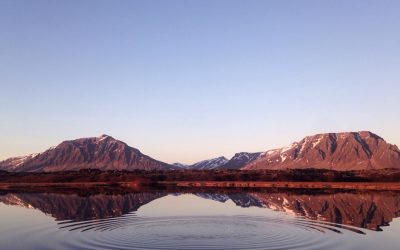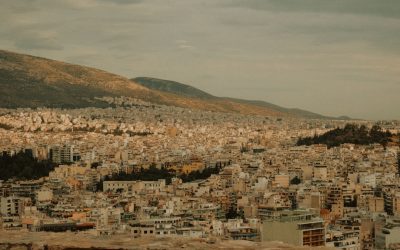World Geography
Geography is the study of the Earth’s landscapes, environments, and the relationships between people and their surroundings. It encompasses both the physical aspects of the Earth, such as its landforms, bodies of water, and climate, as well as the human aspects, including population distribution, cultures, and economies. World geography is a broad field that seeks to understand the complexities of our planet and how humans interact with it. By studying world geography, we can gain a deeper appreciation for the diversity of our planet and the interconnectedness of its various regions.
Geography is a multidisciplinary field that draws on elements of physical science, social science, and humanities. It involves the use of maps, spatial analysis, and geographic information systems (GIS) to understand the Earth’s surface and the processes that shape it. World geography also encompasses the study of human geography, which examines the ways in which people and their activities are distributed across the Earth. By understanding world geography, we can better appreciate the environmental, cultural, and economic challenges facing different regions of the world. This knowledge is crucial for addressing global issues such as climate change, resource management, and international development.
The Five Oceans and Seven Continents
The Earth’s surface is divided into five major oceans: the Pacific, Atlantic, Indian, Southern (or Antarctic), and Arctic Oceans. These vast bodies of water play a crucial role in regulating the Earth’s climate and supporting diverse marine ecosystems. The oceans also serve as important transportation routes and a source of food and other natural resources for human societies around the world.
In addition to the oceans, the Earth’s landmasses are divided into seven continents: Africa, Antarctica, Asia, Europe, North America, Australia (or Oceania), and South America. Each continent has its own unique physical and cultural characteristics, shaped by millions of years of geological processes and human history. From the deserts of Africa to the rainforests of South America, the continents offer a rich tapestry of landscapes and environments for exploration and study.
Major Mountain Ranges and Deserts
The Earth’s surface is also marked by major mountain ranges and deserts that have shaped the planet’s physical and cultural landscapes. The Himalayas, for example, are the highest mountain range in the world and are home to diverse ecosystems and cultures in countries such as India, Nepal, and Bhutan. The Andes in South America, the Rockies in North America, and the Alps in Europe are other prominent mountain ranges that have influenced human settlement patterns and economic activities.
Deserts cover about one-third of the Earth’s land surface and are characterized by low precipitation and extreme temperatures. The Sahara Desert in Africa is the largest hot desert in the world, while the Gobi Desert in Asia is one of the largest cold deserts. Deserts are not only home to unique flora and fauna but have also been important trade routes and cultural crossroads throughout history.
Climate Zones and Biomes
The Earth’s climate is influenced by a variety of factors, including latitude, altitude, ocean currents, and prevailing winds. As a result, the planet is divided into different climate zones, each with its own characteristic weather patterns and ecosystems. The equator, for example, experiences a tropical climate with high temperatures and heavy rainfall, while the polar regions have a cold and dry climate.
These climate zones give rise to different biomes, or large ecological areas characterized by distinct plant and animal communities. The tropical rainforest biome, found near the equator, is home to a diverse array of species and is vital for regulating the Earth’s climate. The grasslands biome, found in regions such as the African savannah and North American prairies, supports grazing animals and has been important for human agriculture throughout history.
Human Geography and Population Distribution
Human geography examines the ways in which people and their activities are distributed across the Earth’s surface. It encompasses topics such as population growth, migration patterns, urbanization, and cultural diversity. Understanding human geography is crucial for addressing global challenges such as poverty, inequality, and environmental degradation.
Population distribution is uneven across the world, with some regions experiencing rapid population growth while others are declining. The majority of the world’s population lives in Asia, particularly in countries such as China and India. Urban areas are also growing rapidly, with more than half of the world’s population now living in cities. This trend has significant implications for infrastructure development, resource management, and social inequality.
Historical and Cultural Geography
Historical geography examines how human activities have shaped the Earth’s landscapes over time. It explores topics such as colonialism, trade routes, and the rise and fall of empires. Cultural geography focuses on how human cultures have developed in different regions of the world and how they interact with their environments.
The Silk Road, for example, was an ancient trade route that connected China with Europe and facilitated the exchange of goods, ideas, and technologies across Eurasia. This historical trade route had a profound impact on the development of cultures and economies along its path. Similarly, cultural geographers study how different societies have adapted to their environments through practices such as agriculture, architecture, and religious beliefs.
The Importance of Geographic Knowledge
Geographic knowledge is crucial for addressing global challenges such as climate change, resource management, and international development. By understanding world geography, we can better appreciate the environmental, cultural, and economic challenges facing different regions of the world. This knowledge is crucial for addressing global issues such as climate change, resource management, and international development.
Geographic knowledge also helps us to understand our interconnectedness with other regions of the world. By studying world geography, we can gain a deeper appreciation for the diversity of our planet and the interconnectedness of its various regions. This understanding can foster a sense of global citizenship and empathy for people from different cultures and backgrounds.
In conclusion, world geography is a complex and multifaceted field that encompasses both physical and human aspects of the Earth’s landscapes. By studying world geography, we can gain a deeper appreciation for the diversity of our planet and the interconnectedness of its various regions. This knowledge is crucial for addressing global challenges such as climate change, resource management, and international development. It also helps us to understand our interconnectedness with other regions of the world and fosters a sense of global citizenship.
FAQs
What is world geography?
World geography is the study of the Earth’s landscapes, environments, and the relationships between people and their environments. It encompasses the physical features of the Earth, as well as the human activity that takes place on it.
Why is world geography important?
World geography is important because it helps us understand the world around us. It provides insights into the physical and human processes that shape our planet, and helps us make informed decisions about how to interact with our environment.
What are the main branches of world geography?
The main branches of world geography include physical geography, which focuses on the Earth’s natural features and processes, and human geography, which examines the relationships between people and their environments.
How does world geography impact our daily lives?
World geography impacts our daily lives in numerous ways, from influencing the weather and climate we experience, to shaping the availability of natural resources and influencing the distribution of populations and cultures around the world.
What are some key concepts in world geography?
Key concepts in world geography include location, place, human-environment interaction, movement, and region. These concepts help geographers understand and interpret the world around them.
Climate Zones of Greece: Different climate regions Of Greece
Greece is a country located in southeastern Europe, known for its rich history, stunning landscapes, and diverse climate zones. The country is divided into several distinct climate regions, each with its own unique characteristics and weather patterns. These climate zones play a significant role in shaping the natural environment, agriculture, and overall lifestyle of the people living in these areas. Understanding the different climate zones in Greece is essential for travellers who want to explore the country and experience its diverse landscapes and weather conditions. From the Mediterranean climate region in the south to the mountainous and continental climate regions in the north, Greece offers a wide range of climates that cater to various interests and activities. Summary Greece has a diverse climate with several distinct zones, each offering unique weather patterns and landscapes. The Mediterranean climate region in Greece is characterized by hot, dry summers and mild, wet winters, making it an ideal destination for beach holidays and outdoor activities. The mountainous climate region experiences cooler temperatures and higher precipitation, making it perfect for hiking and winter sports. The continental climate region in northern Greece has hot summers and cold winters, providing a variety of outdoor activities throughout the year. The semi-arid and coastal climate regions offer warm temperatures and limited rainfall, making them popular destinations for sunbathing and water sports. Mediterranean Climate Region The Mediterranean climate region in Greece is characterised by hot, dry summers and mild, wet winters. This region covers the southern part of the country, including popular tourist destinations such as Athens, Crete, and the Peloponnese peninsula. The summers in this region are long...
Political Boundaries of Greece: Provinces, Districts, or Historical Boundaries.
Greece, a country located in southeastern Europe, is known for its rich history, stunning landscapes, and vibrant culture. The political boundaries of Greece have evolved over the centuries, shaping the country’s governance and administration. The modern political boundaries of Greece are divided into provinces and districts, each with its own unique characteristics and significance. These boundaries play a crucial role in the country’s governance, administration, and socio-economic development. Understanding the political boundaries of Greece is essential for comprehending the country’s complex administrative structure and historical context. Summary Greece is divided into 13 administrative regions, each with its own distinct political boundaries. The administrative regions are further divided into 74 regional units, which are then subdivided into 325 municipalities. The historical boundaries of Greece have evolved over time, influenced by various factors such as wars, treaties, and political changes. The comparison of provinces, districts, and historical boundaries reveals the complexity and diversity of Greece’s political landscape. The impact of political boundaries on governance and administration in Greece is a topic of ongoing debate and controversy, with various stakeholders advocating for different approaches to territorial organization. Provinces of Greece Greece is divided into 13 administrative regions, which are further subdivided into 74 regional units. These regional units are also known as provinces and are the second-level administrative divisions of the country. Each province has its own distinct geographical, cultural, and historical features, contributing to the diversity of Greece. For example, the province of Attica encompasses the vibrant city of Athens, while the province of Thessaloniki is known for its rich history and bustling port. The provinces play a crucial role in...
History of Greece
Ancient Greece is often referred to as the birthplace of Western civilization, and for good reason. It was in this small region of the world that some of the most important and influential ideas and concepts in human history were developed. The ancient Greeks made significant contributions to philosophy, politics, art, literature, mathematics, and science, laying the foundation for much of the knowledge and culture that we still value today. One of the most enduring legacies of ancient Greece is its philosophy. The ancient Greeks were the first to systematically study and question the nature of the world and the human experience. Philosophers such as Socrates, Plato, and Aristotle developed theories and ideas that continue to influence our understanding of ethics, politics, and the nature of reality. In addition to philosophy, the ancient Greeks also made significant contributions to the fields of mathematics and science. The mathematician Pythagoras, for example, developed the famous Pythagorean theorem, while the astronomer Ptolemy made important discoveries about the movement of celestial bodies. These contributions laid the groundwork for much of the scientific knowledge that we have today. In addition to their intellectual achievements, the ancient Greeks also made significant contributions to the arts. Greek art and architecture are renowned for their beauty and sophistication, and continue to inspire artists and architects around the world. The ancient Greeks also developed a rich tradition of literature, producing epic poems such as the Iliad and the Odyssey, as well as groundbreaking works of drama and comedy. The enduring legacy of ancient Greece is a testament to the enduring power of human creativity and intellect. Summary Ancient...
Terrain and Topography of Greece: mountains, valleys, and plains.
Greece is a country located in southeastern Europe, known for its rich history, stunning landscapes, and diverse terrain. The country is made up of a mainland and thousands of islands, each with its own unique topography. The terrain of Greece is characterized by its mountainous regions, beautiful valleys, and fertile plains, making it a country of great natural beauty and diversity. The topography of Greece has played a significant role in shaping the country’s history, culture, and economy, and continues to influence the lives of its people today. The mainland of Greece is dominated by mountain ranges, with the Pindus Mountains running down the center of the country and the Balkan Mountains in the north. These mountains are not only a striking feature of the landscape but also have a significant impact on the climate and vegetation of the region. The Greek islands, on the other hand, are known for their rugged coastlines, sandy beaches, and crystal-clear waters. The diverse topography of Greece provides a range of opportunities for outdoor activities such as hiking, mountain biking, and water sports, making it a popular destination for nature lovers and adventure seekers alike. Summary Greece’s terrain and topography are diverse and varied, ranging from mountains to valleys and plains. The majestic mountains of Greece, such as Mount Olympus, offer stunning natural beauty and opportunities for outdoor activities. The beautiful valleys of Greece, like the Valley of Tempe, are rich in history and provide fertile land for agriculture. The rich and fertile plains of Greece, such as Thessaly, have played a significant role in the country’s agricultural and economic development. Greece’s terrain...
Population Density of Greece
Greece, a country located in southeastern Europe, is known for its rich history, stunning landscapes, and vibrant culture. With a population of approximately 10.4 million people, Greece is a relatively small country compared to its European counterparts. However, despite its size, Greece has a relatively high population density, with an average of 81 people per square kilometer. The population density in Greece is not evenly distributed, with the majority of the population concentrated in urban areas such as Athens and Thessaloniki. This has led to various social, environmental, and infrastructural challenges that the country must address in order to ensure sustainable development and quality of life for its citizens. Summary Greece has a population density of 81 people per square kilometre, making it one of the most densely populated countries in Europe. Factors influencing population density in Greece include geographical features, historical settlement patterns, and economic opportunities. Urban areas in Greece are more densely populated than rural areas, with over 60% of the population living in urban areas. High population density in Greece puts pressure on infrastructure and services, leading to challenges in transportation, housing, and healthcare. The environmental and social implications of high population density in Greece include increased pollution, strain on natural resources, and social inequality. Factors Influencing Population Density in Greece Several factors influence the population density in Greece. One of the primary factors is the country’s topography. Greece is characterized by mountainous terrain, which limits the availability of arable land for agricultural purposes and urban development. As a result, the majority of the population is concentrated in coastal areas and valleys where the land is...
Natural Resources of Greece: Where Natural Resources are located In Greece
Greece, a country located in southeastern Europe, is known for its rich natural resources that have played a significant role in shaping its economy and culture. The diverse landscape of Greece, which includes mountains, plains, and coastline, has contributed to the abundance of natural resources found in the country. From mineral and agricultural resources to energy, water, forest, and marine resources, Greece has a wide range of natural assets that have been utilised for centuries. These resources have not only sustained the livelihoods of the Greek people but have also attracted the attention of other nations throughout history. In this article, we will explore the various natural resources found in Greece and their importance to the country’s economy and environment. Greece’s natural resources have been a source of wealth and prosperity for its people for thousands of years. The country’s strategic location at the crossroads of Europe, Asia, and Africa has made it a hub for trade and commerce, further enhancing the value of its natural resources. The ancient Greeks were known for their exploitation of the land’s resources, particularly in mining and agriculture, which allowed them to build a powerful civilization that influenced the development of Western culture. Today, Greece continues to benefit from its natural resources, which contribute to its economic growth and sustainability. As we delve into the mineral, agricultural, energy, water, forest, and marine resources of Greece, we will gain a deeper understanding of the country’s natural wealth and its impact on various aspects of Greek society. Summary Greece is rich in natural resources, including minerals, agriculture, energy, water, forests, and marine resources. The mineral...
Cultural or Historical Sites of Greece: Important Cultural Landmarks or Historical Sites In Greece
The Acropolis of Athens is a symbol of ancient Greek civilization and is one of the most famous landmarks in the world. Perched high on a rocky outcrop overlooking the city of Athens, the Acropolis is a testament to the architectural and artistic achievements of the ancient Greeks. The most famous building on the Acropolis is the Parthenon, a temple dedicated to the goddess Athena, the patron deity of Athens. The Parthenon is a masterpiece of classical architecture, with its iconic columns and intricate friezes depicting scenes from Greek mythology. The Acropolis also includes several other ancient buildings, such as the Erechtheion and the Propylaea, which are equally impressive in their design and construction. The Acropolis has a long and storied history, having been inhabited since the Neolithic period. It was during the 5th century BC, known as the Golden Age of Athens, that the most famous buildings were constructed on the Acropolis. The Parthenon, in particular, is a symbol of the power and wealth of ancient Athens, and it continues to inspire awe and admiration to this day. The Acropolis has also been a site of religious significance, with temples and sanctuaries dedicated to various gods and goddesses. Today, the Acropolis is a UNESCO World Heritage Site and attracts millions of visitors from around the world who come to marvel at its ancient splendour and learn about the history of ancient Greece. Summary The Acropolis of Athens is a symbol of ancient Greek civilization, showcasing the architectural and artistic achievements of the Golden Age of Athens. Delphi was considered the centre of the ancient world and was home...
Greece
Greece (Ellinikí Dhimokratía (Hellenic Republic)) Capital: Pago Pago Population (Estimated July 2012): 68,061 Area: 200km2 or 77mi2 Currency: United States Dollar (U.S.$) Official Language: English; Samoan Political Information: Unincorporated and unorganized territory of the US Official Religion: No Official Religion (approximately 50% of the population is Christian Congregationalist, 20% are Roman Catholic and 30% are either protestant or have other religious beliefs) Highest Mountain: Lata Mountain at 964m or 3162 feet GDP Official Exchange Rate (OER is more precise at gauging a countries economic power) (Estimated 2005): $462.2 million (US$) or (GBP) GDP (OER) Per Capita (per member of the population estimated 2011): (US$) or (GBP) GDP Purchasing Power Parity (PPP is good for gauging living conditions and use of resources but not as accurate as OER. This data has been calculated based on the sum value of all goods and services produced in the country valued at prices prevailing in the United States) (Estimated 2007): $575.3 million (US$) or (GBP) GDP (PPP) Per Capita (per member of the population estimated 2007): $8,000 (US$) or (GBP) Time Zone (GMT/UTC): -11:00 Counties/Provinces/States: three districts and two islands at the second order; Eastern, Manu’a, Rose Island, Swains Island, Western Leaders: President Donald Trump; Governor Togiola Tulafono Sources: CIA World Fact Book, Encyclopaedia Britannica. Greece Greece, located in southeastern Europe, is a country known for its rich history, stunning landscapes, and vibrant culture. It is often referred to as the cradle of Western civilization, as it is the birthplace of democracy, philosophy, and the Olympic Games. The country is made up of a mainland and thousands of islands scattered throughout...
Political Boundaries of Ghana: Provinces, Districts, or Historical Boundaries.
Political boundaries in Ghana refer to the demarcation lines that separate different administrative units within the country. These boundaries are crucial for the governance and administration of the country, as they determine the allocation of resources, representation, and the implementation of policies and laws. Ghana is located in West Africa and is bordered by Côte d’Ivoire to the west, Burkina Faso to the north, Togo to the east, and the Gulf of Guinea to the south. The country is divided into administrative regions, districts, and local governance areas, each with its own set of boundaries and responsibilities. The political boundaries in Ghana have evolved over time, influenced by historical, cultural, and geographical factors. Understanding these boundaries is essential for comprehending the governance and development of the country. Ghana’s political boundaries play a significant role in shaping the country’s governance and development. The demarcation of administrative regions, districts, and local governance areas determines the allocation of resources, representation, and the implementation of policies and laws. These boundaries are essential for effective governance and administration, as they provide a framework for decision-making and resource allocation. Understanding the political boundaries in Ghana is crucial for comprehending the country’s governance structure and the challenges it faces. In this article, we will explore the provinces and administrative regions in Ghana, the historical boundaries of the country, as well as the impact of political boundaries on development and governance. We will also discuss the challenges and issues with political boundaries in Ghana and the future prospects for their evolution. Summary Ghana is a country in West Africa with a complex system of political boundaries. The...
History of Ghana
Ghana has a rich and diverse history that dates back to ancient times. The region that is now known as Ghana was once home to several powerful and influential kingdoms and empires. One of the most well-known of these ancient civilizations was the Ghana Empire, which flourished between the 9th and 13th centuries. The Ghana Empire was a major trading power in West Africa, known for its wealth and sophisticated governance. It controlled the trans-Saharan trade routes and was a hub for the exchange of gold, salt, and other valuable commodities. Another significant pre-colonial kingdom in the region was the Ashanti Empire, which rose to prominence in the 17th century. The Ashanti Empire was known for its strong military and political organization, as well as its rich cultural heritage. The empire’s economy was based on the trade of gold, ivory, and slaves, and it played a central role in the transatlantic slave trade. The Ashanti people were also known for their skilled craftsmanship, particularly in the production of gold jewelry and textiles. Overall, pre-colonial Ghana was a region of great cultural, economic, and political significance in West Africa. The ancient kingdoms and empires that thrived in this area left a lasting legacy that continues to shape Ghanaian society and identity to this day. Summary Pre-Colonial Ghana was home to ancient kingdoms and empires, including the Ashanti and the Akwamu, known for their rich cultural heritage and trade networks. The arrival of European explorers and traders in the 15th century marked the beginning of significant changes in Ghana, including the introduction of new goods and the establishment of forts and...
Climate Zones of Ghana: Different climate regions Of Ghana
Ghana is a country located in West Africa, known for its diverse climate zones. The country’s climate is influenced by its proximity to the equator, the presence of the Gulf of Guinea, and the elevation differences across the country. Ghana’s climate can be broadly categorized into six main zones: the tropical rainforest, tropical savannah, coastal, semi-arid, transitional, and highland climate zones. Each of these zones has its own unique characteristics, including temperature, precipitation, and vegetation. Understanding these climate zones is crucial for understanding the country’s biodiversity, agriculture, and overall environmental conditions. Summary Ghana has six main climate zones, each with its own unique characteristics and weather patterns. The Tropical Rainforest Climate Zone is characterized by high temperatures, heavy rainfall, and lush vegetation. The Tropical Savannah Climate Zone experiences a wet season and a dry season, with grasslands and scattered trees. The Coastal Climate Zone has high humidity, warm temperatures, and frequent rainfall due to its proximity to the ocean. The Semi-Arid Climate Zone has low rainfall and high temperatures, leading to dry and dusty conditions. The Transitional Climate Zone experiences a mix of characteristics from the other zones, with varying levels of rainfall and temperature. The Highland Climate Zone has cooler temperatures and lower humidity due to its higher elevation, with distinct wet and dry seasons. The Tropical Rainforest Climate Zone The tropical rainforest climate zone covers the southern part of Ghana, including the Ashanti and Western regions. This zone is characterized by high temperatures and abundant rainfall throughout the year. The average temperature in this zone ranges from 24°C to 28°C, with little variation between seasons. The annual...
Terrain and Topography of Ghana: mountains, valleys, and plains.
Ghana, located in West Africa, is a country with diverse and varied terrain and topography. The landscape of Ghana is characterized by a mix of mountains, valleys, lowlands, plains, and plateaus, making it a geographically rich and diverse country. The terrain and topography of Ghana play a significant role in shaping the country’s climate, human settlements, agriculture, and conservation efforts. Understanding the different geographical features of Ghana is crucial in appreciating the country’s natural beauty and the challenges it faces in managing its diverse landscapes. Ghana’s terrain and topography are influenced by the country’s location on the Gulf of Guinea and its proximity to the equator. The southern part of the country is characterized by low-lying coastal plains, while the central and northern regions are dominated by highlands, plateaus, and valleys. The Volta River, one of the largest rivers in West Africa, also cuts through the eastern part of the country, creating a unique landscape of river valleys and basins. The diverse terrain and topography of Ghana provide a rich tapestry of natural beauty and resources that have shaped the country’s history, culture, and development. Summary Ghana’s terrain and topography are diverse, ranging from mountains and valleys to plains and plateaus. The mountain ranges of Ghana include the Akwapim-Togo ranges and the Kwahu Plateau, offering stunning landscapes and biodiversity. The valleys and lowlands of Ghana, such as the Volta Basin and the Densu Basin, are important for agriculture and human settlements. The plains and plateaus of Ghana, including the Guinea Savannah and the Akan Lowlands, support a variety of agricultural activities. The varied terrain and topography of Ghana greatly...











